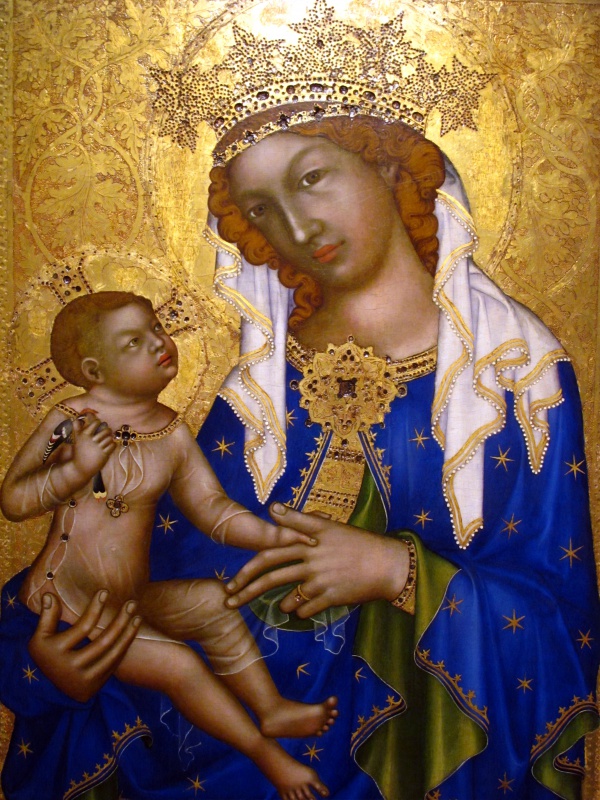Facts About Madonna of Zbraslav
The Zbraslav Madonna boasts a captivating history that originates in the parish church of St. James the Greater in Zbraslav. Presently, this exquisite painting is on long-term loan at the National Gallery in Prague.
Dating back to the 14th century, the painting is believed to have originated at the Cistercian abbey in Zbraslav near Prague, which was established by King Wenceslaus II. Although the identity of the artist remains unknown, experts estimate that the Zbraslav Madonna was created between 1350 and 1360. Executed in tempera on a lime-wood panel, the artwork is rich with intricate details, including gold embroidery, a goldfinch motif, and a ring symbolizing the mystical betrothal of Christ and Mary.
A distinctive feature of the painting is its depiction of a tender and intimate relationship between mother and child, setting it apart from other Madonna representations of the time. The Zbraslav Madonna was highly revered in Bohemia and may have been commissioned by Emperor Charles IV. Over the years, numerous replicas were produced, particularly during the Baroque period. It even became the 43rd chapel of the Holy Route from Prague to Mladá Boleslav.
The painting has undergone several restorations, initially in 1945 and then again in the 1990s, to remove old retouching and overpainting. These efforts have ensured that the Zbraslav Madonna continues to captivate viewers with its historical and artistic significance.

 Austria
Austria